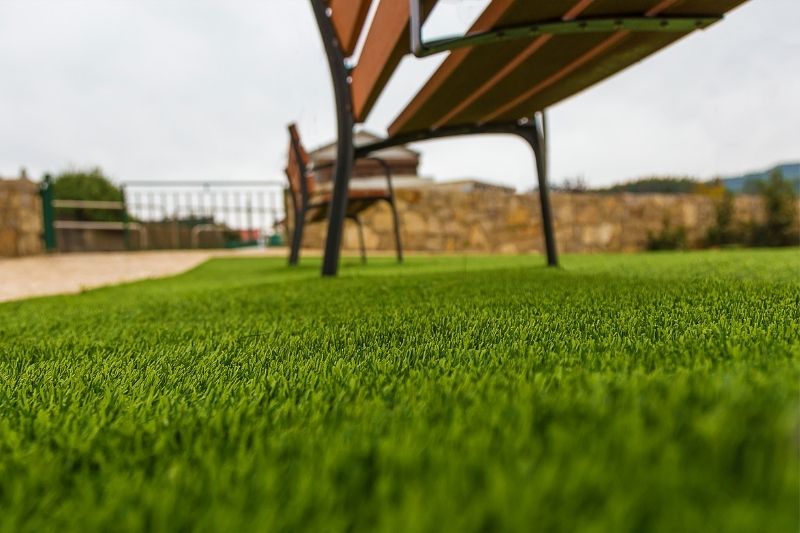Since its initial use on
athletic grounds, artificial grass has undergone substantial development. These
days, it's a flexible option for residences, lodging facilities, and even
roofs. Artificial GrassGarden appears to have a bright future as long as the industry keeps
innovating.
The new, incredibly realistic grasses that are being developed are among the most fascinating breakthroughs. Artificial grass is nearly identical to genuine grass these days. Sophisticated mixes of polyethene and polypropylene mimic the look of well-kept, lush grass. Although artificial grass used to feel a bit fake, current turf technology offers bare feet an experience that is quite natural.
Moreover, these high-tech
grasses are incredibly resilient to weather. It has been lush and colourful for
more than ten years with the right base preparation and upkeep. The low
maintenance expenses of artificial grass are another advantage for galleries
and other public places.
Sustainability:
Environmental
sustainability is the primary focus of artificial turf production. Recycled
materials are being used by businesses to reduce their impact on landfills.
Furthermore, producers of infill are creating less hazardous materials for
landscaping and athletic uses. In the end, producing turf that is entirely
recyclable and has the least possible environmental impact is the aim. This is
especially crucial in places that are prone to drought, where artificial grass
is not just a requirement but also a design option. Demand for sustainable
artificial grass choices is expected to increase as customers become more aware
of their influence on the environment.
An additional aspect
influencing the use of artificial grass technologies is sustainability. My work
prioritizes water saving, and artificial lawns don't need to be fertilized.
Additionally, less mowing reduces carbon emissions. Certain suppliers provide
lawn recycling services, collecting spent grass to be processed into fresh
goods.
Drainage System:
For artificial grass to
last a long time and have a minimal environmental impact, proper drainage is
essential. The goal of backing material innovations is to replicate the natural
grass's ability to drain. Thanks to these developments, synthetic grass will
become practical in places where it isn't currently, such as floodplains with
soggy soil. The future of artificial grass and its ability to lower carbon
footprints depend on efficient drainage systems. As time goes on, we should
anticipate seeing even more creative drainage methods that increase the versatility
and environmental friendliness of artificial grass.
Realism:
Artificial grass is
starting to look and feel more like genuine grass. Various natural grass
varieties can be matched with a customized look thanks to coloured infill
possibilities. Even on TV, it can be difficult to tell the difference between
artificial and genuine grass at times. The appearance of the grass can also be
altered by using different brushing techniques, providing design flexibility.
The artificial grass sector is always developing new technologies to improve
its realism, which makes it a more appealing choice for both businesses and
households.
Artificial Intelligence in
Turf Management:
In the turf industry,
artificial intelligence (AI) is becoming more prevalent. Artificial
Intelligence is able to keep an eye on conditions above and below the lawn,
giving insights for the best possible upkeep. Slip resistance is especially
important in sporting fields, where this technology comes in handy. AI may also
assist in determining when turf replacement is required, which might save
long-term expenses. The exciting breakthrough of integrating Artificial
Intelligence into turf management holds the potential to completely transform
the way we maintain and use artificial grass.
Infill Options that are
Eco-Friendly:
Artificial grass cannot have its realistic feel and look without infill. Coated sand particles and organic, recycled materials are taking the place of conventional infill materials like rubber and sand. Because these environmentally friendly alternatives eliminate microorganisms, they help improve hygiene in addition to being better for the environment. We may anticipate a greater variety of infill alternatives that meet different needs and preferences as the sector develops.
A Blend of Artificial and
Natural:
Enhanced Durability:
Artificial grass is made
to withstand inclement weather and heavy use. Innovations in infill materials,
backing systems, and fibre technologies are making synthetic grass more durable
and resilient. As a result, artificial grass may be utilized in more areas and
for more applications.
Cooling Technology:
Particularly in warm
areas, heat accumulation on artificial turf surfaces can be problematic.
Cooling solutions are being developed and integrated into artificial turf
systems as a solution to this problem. Infill materials that lower surface
temperature and increase player comfort, moisture management systems, and reflecting
coatings are a few examples of these technologies.
Performance Enhancement:
In order to satisfy the
unique performance needs of various sports and activities, artificial grass is
being designed. Turf systems used for soccer, for instance, could differ from
those used for hockey or football. To improve gameplay and lower injury risk,
manufacturers are concentrating on optimizing elements including ball roll,
ball bounce, shock absorption, and player traction.
Material and Application
Insights:
Polyethylene is the most
common material on the market due to its resistance to a variety of weather
conditions and heavy foot traffic. Synthetic grass is especially popular in the
sports business, where its weather-resistant playability has led to consistent
growth.
Technology developments, sustainability, and rising demand from a variety of industries will all contribute to artificial grass's promising future. Artificial Grass GB is your go-to source whether you're searching to purchase artificial turf or are unsure of its price. We are dedicated to providing products that address the demands of our dynamic environment, even while the industry undergoes continuous transformation. With these continued advancements, artificial grass—which provides both practical and aesthetic advantages—is expected to become an ever more essential part of our everyday life.










0 Comments